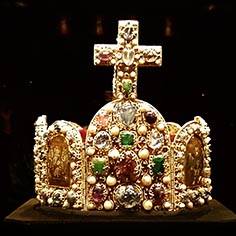Imperial Treasury: the heritage of emperors and empires at the Vienna Hofburg
History and Mythology in Vienna Hofburg
“Treasure” — a word most people are acquainted with before the age of voluntary museum attendance. Fairy tales and adventure novels paint a picture in which gold and gemstones (preferably in old chests), royal jewellery and richly decorated weapons are scattered in a creative mess in a cave or, at least, in a secret room behind a forged door in a palace.
In Vienna, you can see all this in the Imperial Treasury. It is true that modern museum facilities do not imply disorder and prefer sealed showcases to picturesque chests. But otherwise, there’s a palace, doors, crowns, necklaces and other treasures in the truest sense of the word.

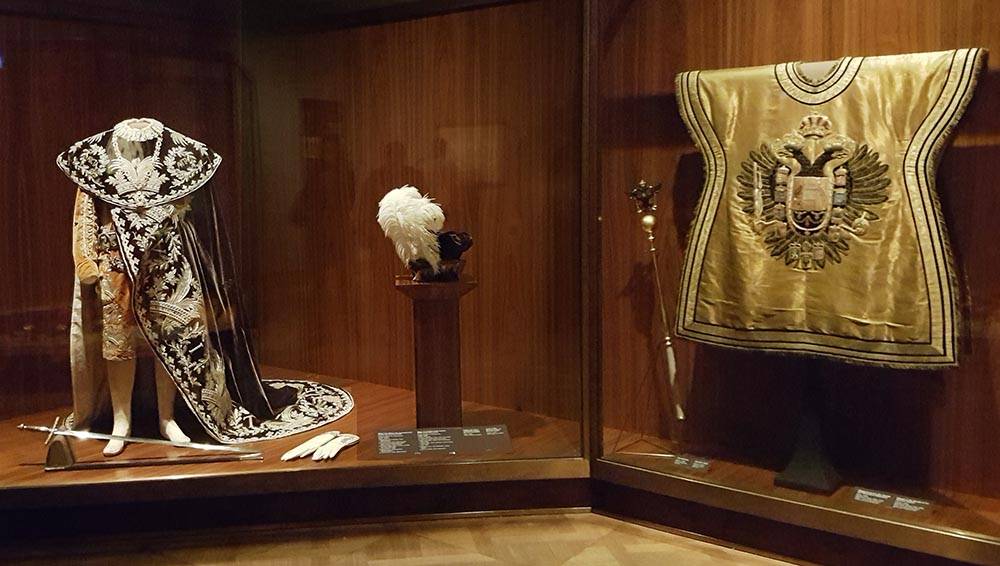
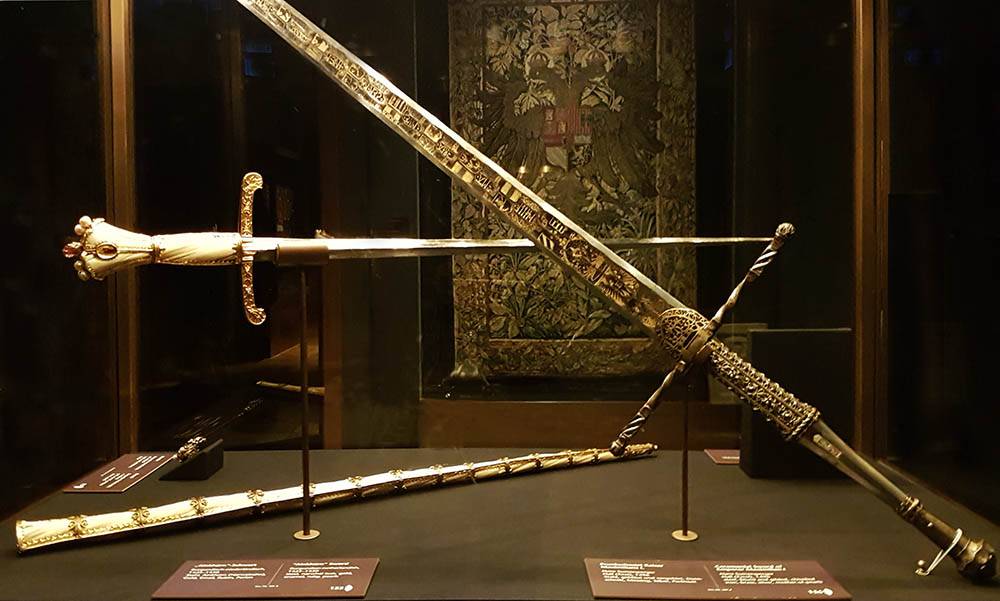
Most valuable treasures
Since no single man, let alone mighty organization, can do without a depository of material values. After six centuries in power the Habsburg family accumulated enough valuables to fill numerous palaces and museums, most of which belong to the state now. Don’t worry, the Habsburgs were left enough to live on. The Imperial Treasury, in the oldest part of the Hofburg Palace, holds only those items that are heavyweights in two categories at once: both materially and symbolically valuable. No matter how valuable an object is in one category, if it is not of great weight in the other, it will not get to the Treasury.
For example, large gemstones are on display in the mineral collection of the Museum of Natural History, but stones with a legend, such as a giant emerald brought in the 16th century by the Spanish from Colombia, are kept in the Treasury. According to the legend, a Russian tsar offered several chests of pearls for it, while Florentin rulers offered three tons of gold. The aesthetics of the time did not allow for admiring the raw gemstone, so a goldsmith Dionysio Miseroni got a commission from the emperor to cut a vessel, which turned out be rather ugly. But once again – in these walls, a legend is of importance. It is the symbolic value that is important, not the mastery of an artisan. So, if you are interested in craftsmanship, then go to the Kunstkammer or the Museum of Art History, extraordinary masterpieces of applied art are all there.
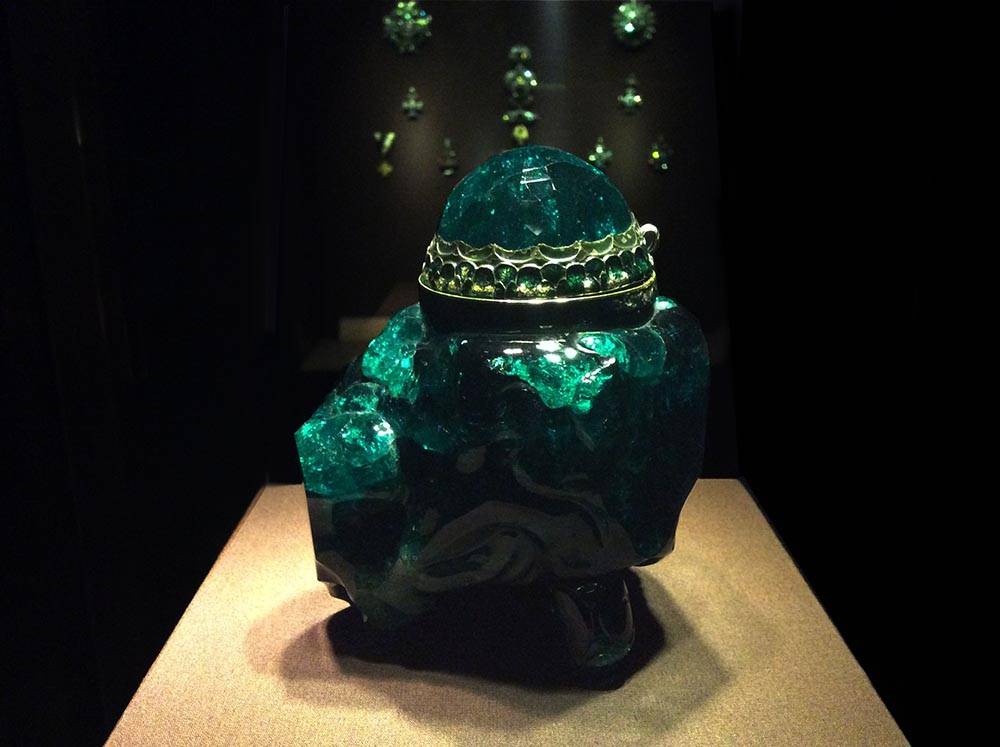
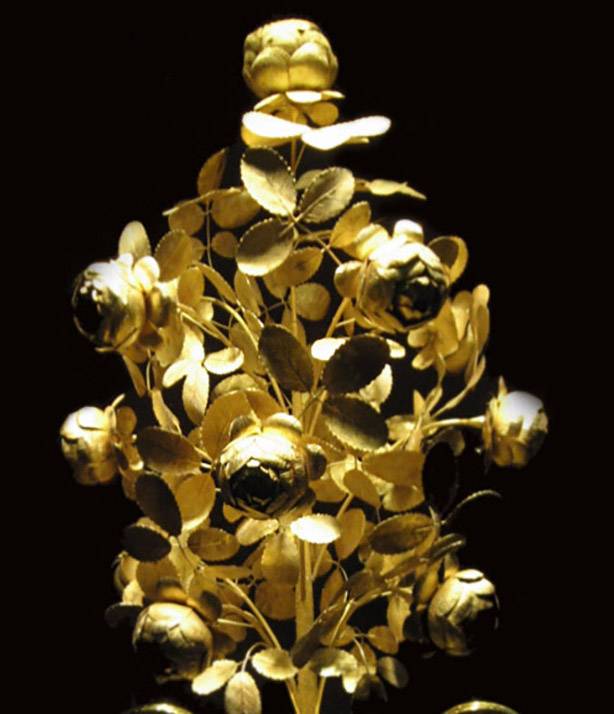

So, any exhibit here — a golden rose, an opal necklace, or goblets and brooches — will carry more emotion if you keep the idea of a double value in mind.
The Сrown of the Holy Roman Empire
Crowns left by empires and emperors are something that particularly attract visitors. It’s easy to understand if you consider the cultural stereotype of “met by cloth”, which is still important today. Headdresses, with their functional redundancy, do not lose their symbolic load even today. Look at baseball caps, headscarves, and the desire of (almost) every girl to try on a diadem, even if it is made of plastic.
The most legendary headdress in the Treasury is the so-called Crown of Charlemagne. For the sake of credibility, his portrait hangs here. However, today we know that the oldest parts of it belong to the second half of the 10th century — so on the head of the Emperor in 800, the Pope laid something else, not this monumental construction of gold, pearls and precious stones.
But still the age of this object, the saturation of symbols, its barbaric excessiveness with no single millimetre without a gem, fascinate anyone who looks at it. And when we compare the images on it depicting David and Solomon, of Ezekiel and Christ, it is easy to believe in the sacred right of kings, recorded on the crown in a divine language – more often called simply Latin.
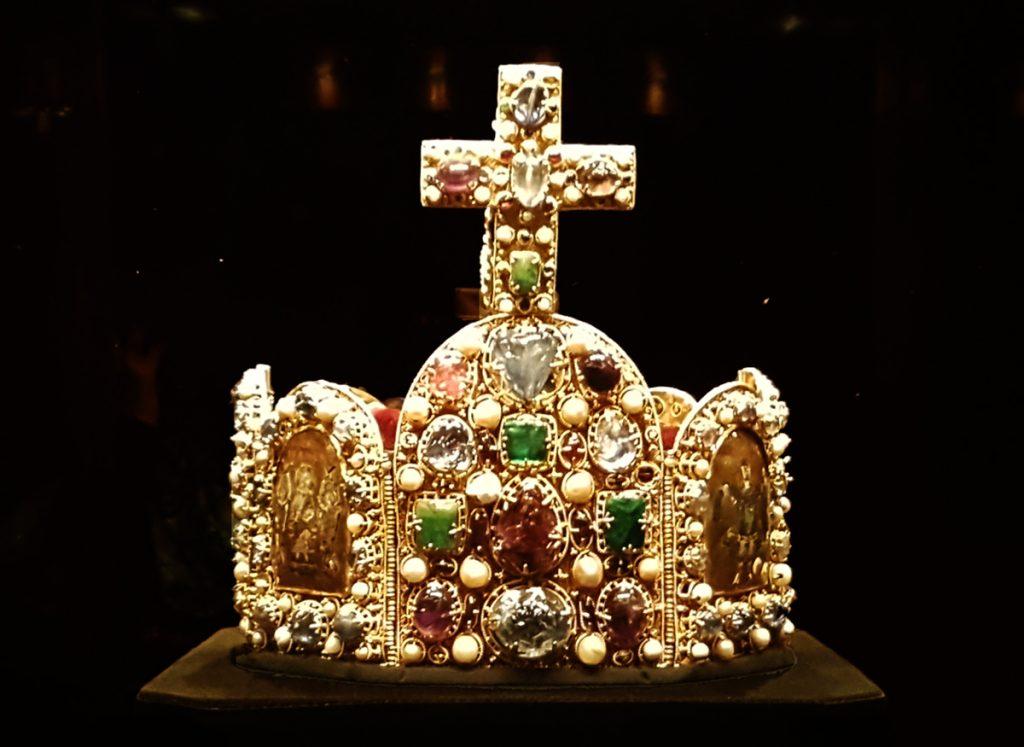

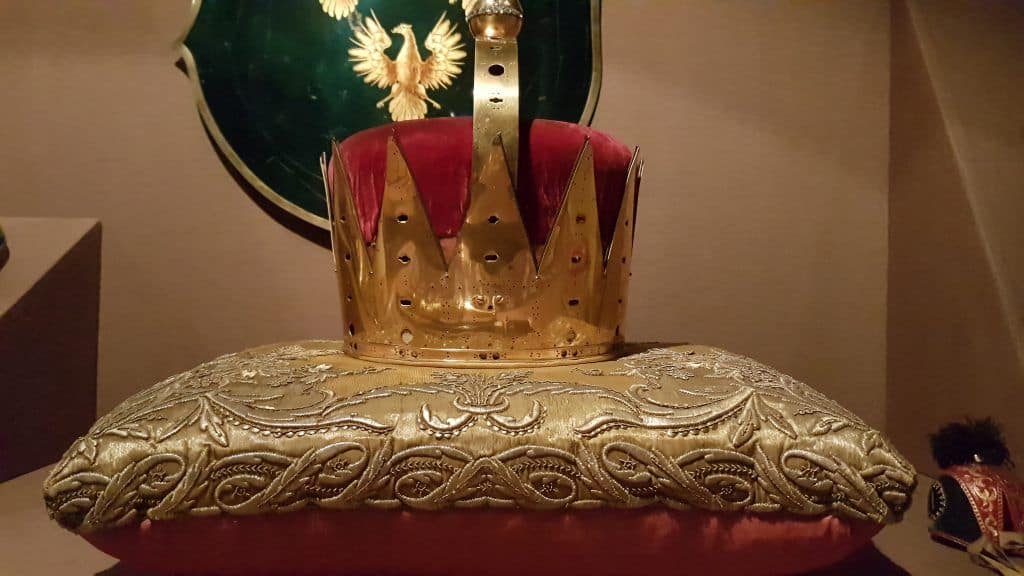
Spiritual and Secular Collections
Today the museum is divided into two parts — Spiritual and Secular. It became only possible to segregate objects in the 19th century, when believing in miracles ceased to be a social norm.
Now crowns, stones and cloaks belong to the Secular Treasury, and “parts of the true cross”, “holy nail”, “spear of Destiny”, “Veronica’s veil” and relics of saints belong to the Spiritual Treasury.
My favourite in this section is the “Unicorn’s Horn.” Unlike other things here, whose values are supported by precious frames, the horn stands out by its minimal surroundings. This is what gives the most vivid image of the times when the one and a half a meter long bone of a narwhal was unconditionally accepted as a horn of a mythical beast.
Strictly speaking, the “Unicorn’s Horn” is not exactly a part of the Spiritual Treasury, as there is not a word about unicorns in the Bible, and some of the most Christian rulers of the Habsburg dynasty were strict guardians of the faith. Their whips for self-flagellation, in addition to the relics and sacred images, remind us of this.

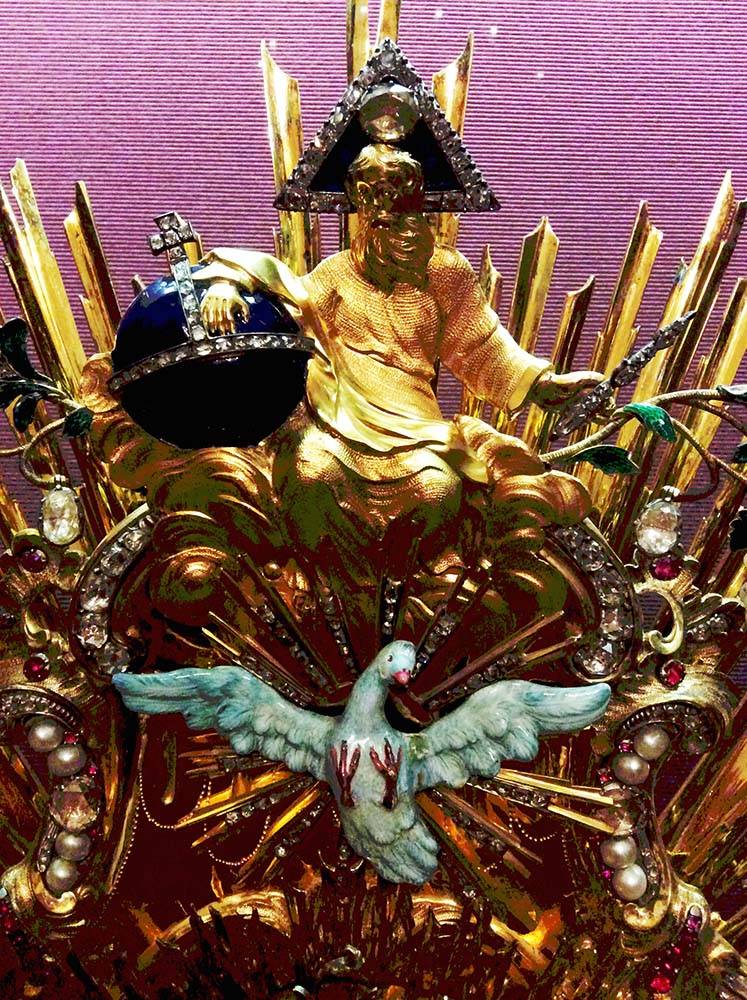
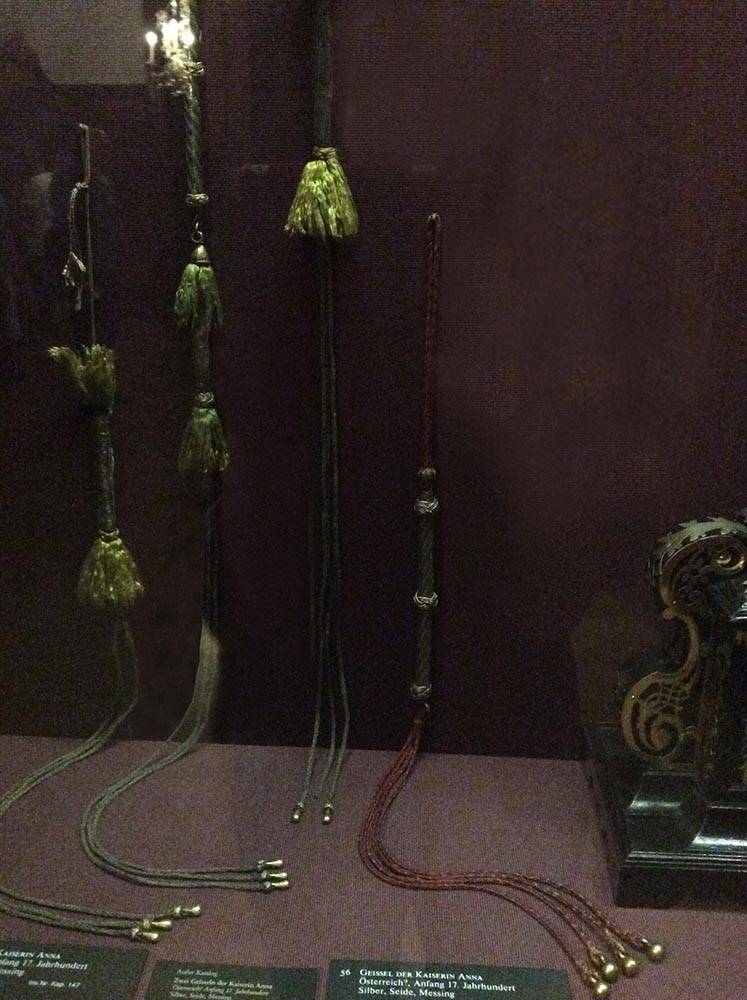
Despite its relatively small size, the Treasury is capable of taking up the imagination for a long time. Its exhibits will shake off apparently natural perceptions of value and price, history and mythology, and that is exactly why it is worth going to this museum.
Imperial Treasury
(Die Kaiserliche Schatzkammer)
Address: Hofburg, Schweizerhof, 1010 Wien
Opening hours: daily except Tu 9 am – 5:30 pm
Official website of the Imperial Treasury
You might also be interested:

